Syn.: Epurga lathyris (L.) Fourr., Euphorbia decussata Salisb., Euphorbia spongiosa Ledeb. ex Schrank, Euphorbion lathyrum (L.) St.-Lag., Galarhoeus decussatus (Salisb.) Gray, Galarhoeus lathyris (L.) Haw., Keraselma lathyris (L.) Raf., Tithymalus cataputia Garsault, nom. inval., Tithymalus lathyris (L.) Hill
Family: Euphorbiaceae Juss.
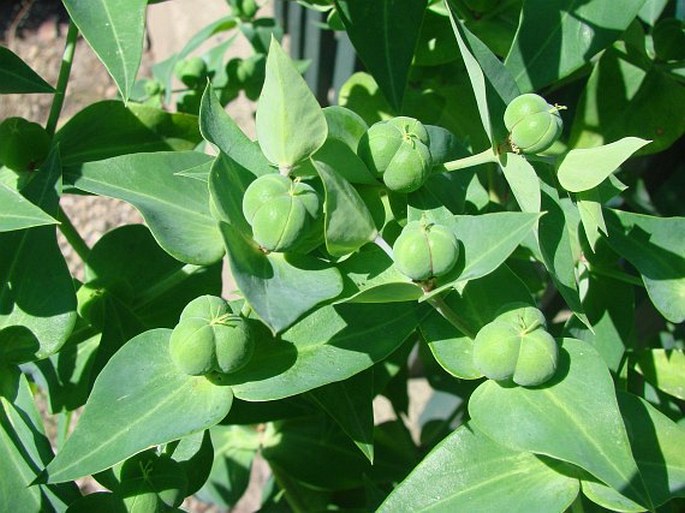
Distribution: Native to southern Europe (France, Italy, Greece). It is naturalised in many regions (western and central Europe, from northwestern Africa through southwestern Asia to western China, also southwestern and southeastern Australia and Tasmania; Pacific and Atlantic coast of North America, etc.).
Ecology: It grows in margins of fields, as weed of cultivated ground, and in disturbed sites. It blooms from May to September.
Description: Biennial herb, glabrous, glaucous, up to 150 cm tall, with latex and numerous axillary shoots. Stem erect, in upper part branched; cauline leaves opposite and decussate, 30–150 mm long and 5–25 mm wide, linear to oblong-lanceolate, entire. Ray-leaves ovate-lanceolate; raylet-leaves triangular-ovate, acute, paler green than the cauline and ray-leaves. Rays 2–4, up to 8 times dichotomous. Male flowers many, exserted from involucre; female flower exserted from cup; glands with two clavate horns, yellow. Capsule 9–13 × 13–17 mm, shallowly sulcate, with spongy pericarp.
Use: It is used in traditional medicine as a poison, antiseptic, and a purgative. Its milky sap can cause dermatitis and eye irritation.
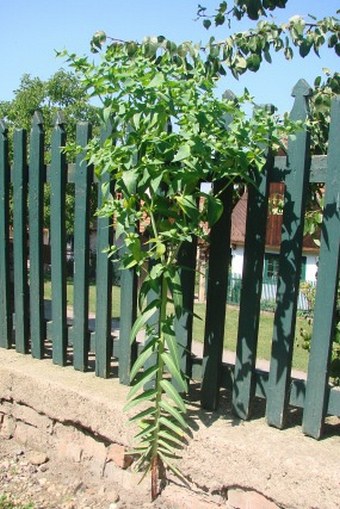
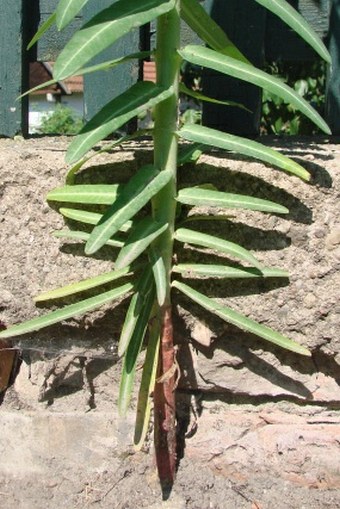
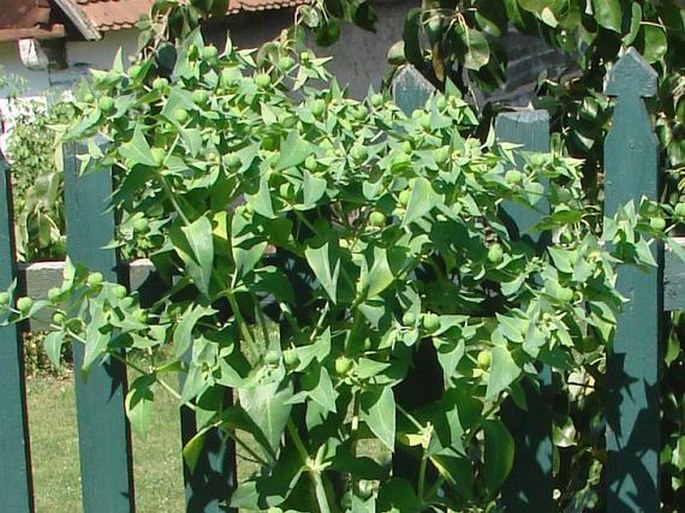
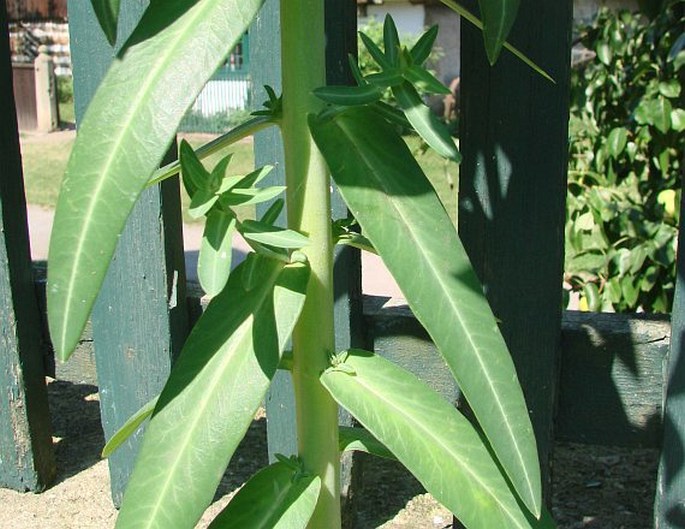
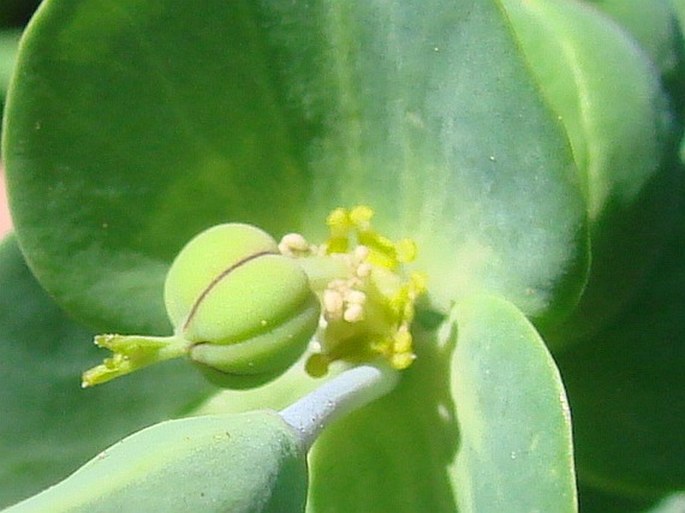
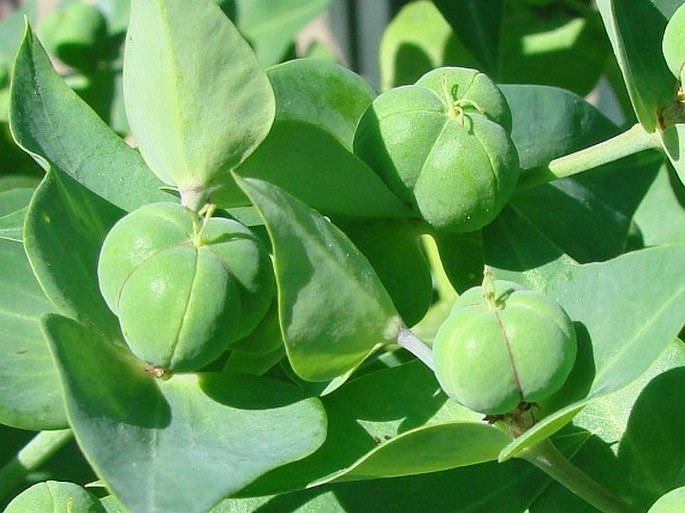
These images were taken in Czechia, Polabí, Přerov nad Labem (July 20, 2014).


